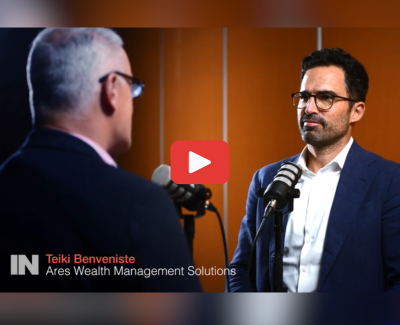This is no Big Short: Why CLOs are different to the product that sparked the GFC
The following was produced and published as part of Livewire’s The Pitch on 12 June 2024.
Michael Burry and Steve Eisman were among the few investors who spotted the rotten state of CDOs. But CLOs are, thankfully, different.
In the beginning, the Collateralised Debt Obligation (or CDO), was a humble and diversified vehicle by which a slew of mortgage-backed securities (read: housing debt) could be bought and sold among sophisticated investors. But by 2006, that collateral had become dominated by high-risk – or sub-prime – mortgages. It is these assets that caught the eye of such names as Michael Burry, Steve Eisman, and Meredith Whitney and caused them to believe that the American housing market was about to blow up.
For those of you who were too young to remember this, there’s always The Big Short, a blockbuster film starring Steve Carell, Brad Pitt, and pre-Barbie Ryan Gosling among others.
But for those with long memories, CDOs leave a bitter taste in many investors’ minds. Fast forward to 2024 and the market has changed dramatically. One of the ways the market has changed has been in the rise of a similarly named – but very different – product called CLOs. These collateralised loan obligations are, according to Ares’ Teiki Benveniste, underpinned by different products and are more transparent. But are they safe to invest in?
EDITED TRANSCRIPT
What – in plain English – are collateralised loan obligations?
Benveniste: A CLO, or a collateralised loan obligation, is effectively a pool of diversified senior secured corporate loans. You’re talking about 200-300 loans across multiple issuers and multiple industries. So it’s not all in real estate, for instance.
It’s quite diversified and it’s actively managed by investment managers such as ourselves. And then what you can do is you can invest in debt tranches that are issued against those pools of loans and you can decide which level of risk you want.
The lowest level of risk and highest quality products are going to be Triple-A, as independently rated by a rating agency, all the way down to single-B. If you look at history, in terms of those debt tranches and the levels of defaults that they’ve experienced, especially in the investment grade side of things, the levels of defaults you’ve experienced in CLOs have been quite minor especially compared to CDOs. It’s been almost zero.
The worst it has been was through the GCF, and it was 0.3% over 12 months. If you look at CDOs over the same time period, the worst 12-month rolling default rate was about 30% in investment-grade CDOs. So it’s a very, very different experience. (2)
CDOs were often criticised for being very opaque and difficult to understand. Are CLOs any easier or more transparent to examine?
Benveniste: They’re absolutely more transparent and we use proprietary technology to be able to look through to the underlying loans in real-time.
So every time we invest in the debt tranche of a CLO, we’re able to actually break it down to the underlying components and apply our own credit underwriting. We’re a very large manager in the syndicated loan market. We have capabilities there to look at those loans and think about what the actual risk is in that pool of loans. Is that BBB tranche really a BBB tranche or is there more risk in this one versus that other one?
When we do that work, with that level of transparency, two Triple-B tranches of two CLOs that are trading at the same level because they are managed by a great manager and the returns look the same, allows us to say that we’ll buy this one because we feel the credit quality of the underlying loans are better there than in this other one.
Given CLOs are investors in leveraged loans and the historic rate hiking cycle we have had, are you concerned about a big spike in defaults?
Benveniste: I think we’re paid to be concerned, so we’re always concerned. In all honesty, as a credit manager, we need to look at default risk as the main risk in credit. And when you look at what’s been happening in the loan market and borrowers in the loan market, they’re still well placed to service their debt. Interest coverage ratios have come down, but they’re starting to tick up again.
Defaults have come up from the lowest point that we’ve seen in a very long time to back around their historical averages, and now we’re seeing interest coverage ratios coming up. You’re going to have some defaults. You’re going to have companies that are going to struggle to pay or service their debt, but we’re not seeing a huge spike in defaults. One of the reasons is that there are no imminent walls of maturity in the loan market, they’ve all been pushed out.
Two reasons why a loan defaults are that the company cannot service its debt or it has to refinance and it can’t refinance. Those two risks are quite manageable at the moment.
Now you go to the CLO world. Historically, CLOs and the loans they’ve held in their pool of assets have had fewer defaults than the broader loan market. So the active management on average has been positive in terms of experiencing fewer defaults in those pools of assets. So that’s reason number one. So even if there’s a spike in loan defaults, the risk of a default in the debt tranches of CLOs is still quite minimal.
The other consideration is when you think about the way they’re structured, you will need to see about 10% or over of defaults in the pools of loans over multiple years to start to see defaults in a Triple-B rated CLO tranche. On average, as I said, the loan market has had defaults of about 2% to 3% per annum over the last 15 years. (3)
So we feel it’s not impossible, but the probability is quite low.
How do you create value for the end investor by investing in CLOs?
Benveniste: We really like using CLOs to provide, in our diversified portfolios, credit enhancement because you can buy investment-grade credit tranches and earn a yield premium relative to similarly rated corporate credit. If you look at Triple-B-rated CLOs and compare them to corporate bonds of the same rating, you have a yield pickup at the moment. I think it’s about 4.5% or 450 basis points of the current yield pickup. (4)
What it means is that an investor could go and buy 50% of its investment into the loan market and 50% in the high-yield bond market and get about 8% current yield.
That’s roughly what they would get if they did that. But most of those instruments that they’re buying are going to be sub-investment grade and there’s going to be quite a bit of duration risk coming from the high yield part because it’s fixed rate. If you use CLOs, you can build a portfolio where you’ve got a higher exposure to investment-grade credit, meaning you don’t have to invest in the lower quality part of the credit market. That means you probably don’t have exposure to Triple-C-rated corporate assets, and you still can generate an 8% current yield. So the same current yield, lower credit risk, and lower potential volatility is how we think about it.


